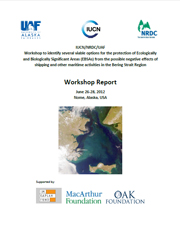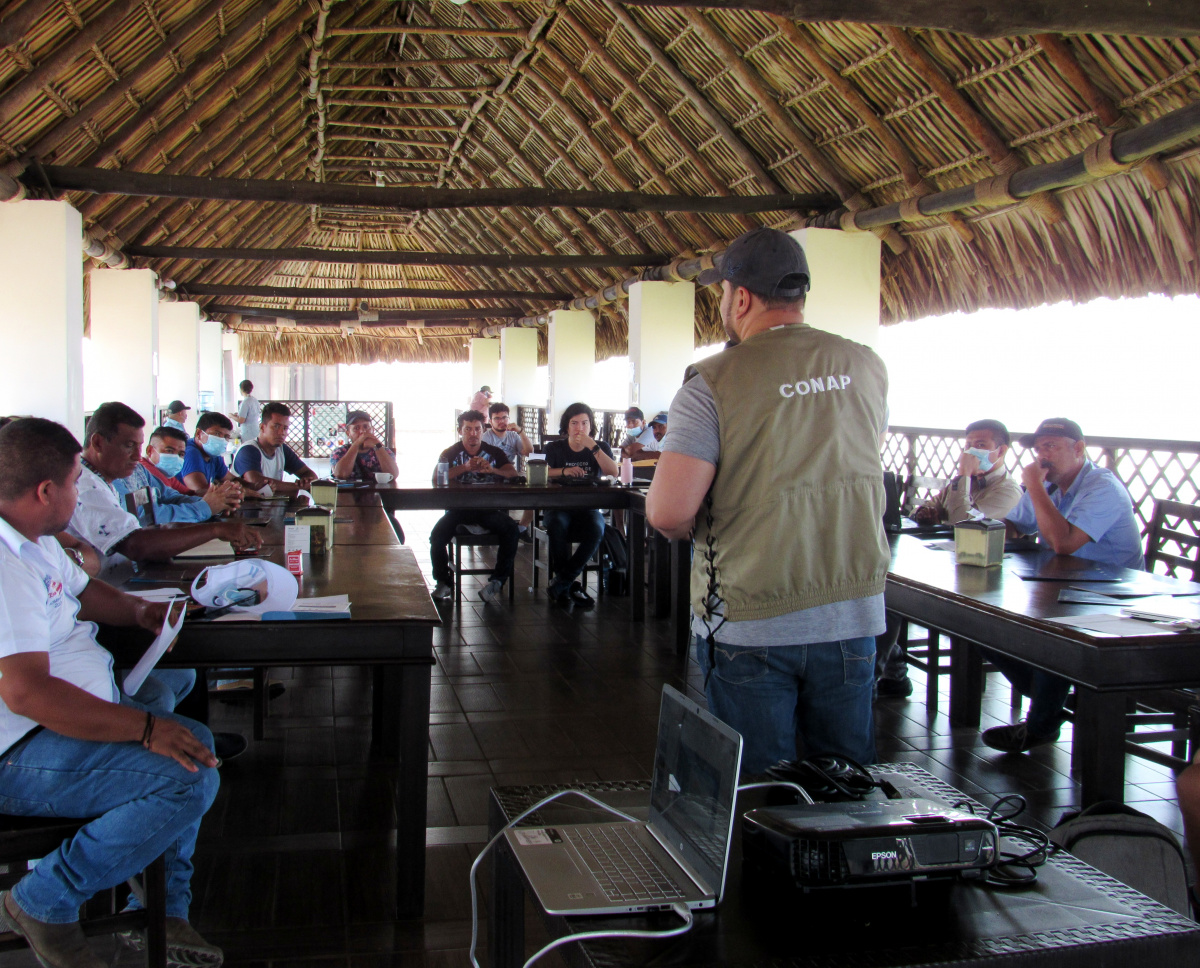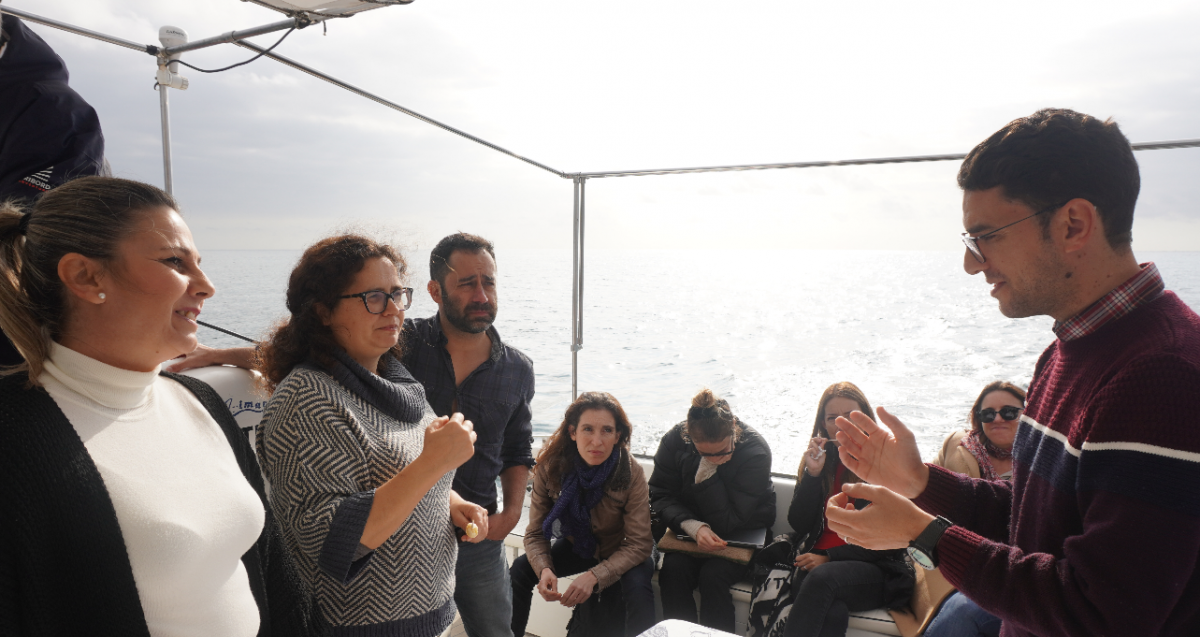Nome Workshop Report on Bering Strait Ecologically and Biologically Significant Areas (EBSAs)
Warming ocean temperatures and the dramatic loss of ice cover is opening Arctic waters to new and expanded shipping, fishing, research, offshore oil development, and other economic activities.Trans-Arctic and “destinational” shipping will likely grow substantially and will necessarily transit the Bering Strait, a relatively narrow 53 mile wide passage which provides the only connection between the Pacific and Arctic Oceans.

Photo: IUCN
A workshop held in November 2010, organized by the International Union for Conservation of Nature (IUCN) and the Natural Resources Defense Council (NRDC), identified four “super-EBSAs” (Ecologically or Biologically Significant Areas) in the Bering Strait region using criteria developed under the auspices of the Convention on Biological Diversity (CBD). The workshop identified the Bering Strait region as perhaps the single most productive and diverse marine area in the Arctic.
The region provides critical habitat for walrus, seals, fish, several types of whales, and immense numbers of birds. It has an ancient human history and an enduring cultural heritage significance for all, especially the indigenous peoples who live there. This regional indigenous culture and its subsistence hunting and fishing traditions continue to be vibrant today.
In March 2012, an international group of experts working under the auspices of the Arctic Council Working Group on Protection of the Arctic Marine Environment (PAME) completed a draft report identifying Arctic areas of heightened ecological significance. The report was prepared pursuant to Recommendation IIC of the Arctic Council Arctic Marine Shipping Assessment (AMSA). That report similarly identified the Bering Strait region as globally significant for a number of species, as did the Arctic Marine Synthesis report prepared by Audubon Alaska and Oceana.



